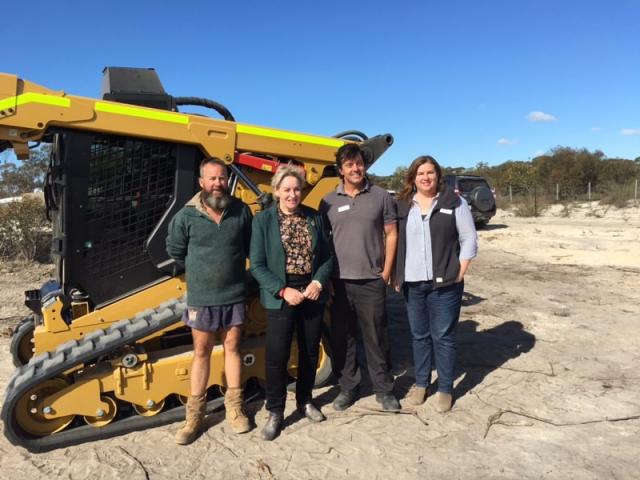Impact of State Barrier Fence to be enhanced by Esperance extension

The historic State Barrier Fence (SBF) plays an important role in minimising the impact of invasive species and protecting Western Australia’s agricultural areas.
Originally built starting between 1902 and 1907 to prevent rabbits migrating from the east, today the fence plays a vital role in preventing the entry of wild dogs and emus from the rangelands into farming areas in the agricultural region of Western Australia.
For many years, the fence has extended from the Zuytdorp cliffs north of Kalbarri, through to Jerdacuttup, east of Ravensthorpe, in the south.
This left the south east agricultural areas of Ravensthorpe and Esperance exposed to the incursion of wild dogs from pastoral areas.
Farmers and communities in the Esperance and Ravensthorpe areas, where wild dogs have increasingly had a socio-economic impact by affecting livestock and limiting livestock enterprises, have long waited for extension of the State Barrier Fence.
Esperance extension
Earlier this month, Agriculture and Food Minister Alannah MacTiernan announced that construction on the highly anticipated Esperance extension of the fence had commenced, coordinated by the Department of Primary Industries and Regional Development.
When completed, the new stretch of State Barrier Fence will create a 660 kilometre boundary that protects farming properties in Western Australia’s south east from the impacts of wild dogs on livestock, emus on grain crops, and kangaroos from the rangelands and adjacent woodlands.
The State Government’s $6.9 million investment in the fence extension, with collaborative funding from the shires of Esperance and Ravensthorpe, and the Federal Government, is part of a broader range of measures to support Western Australia’s livestock industry to combat wild dogs.
Australian Wool Innovation has provided fencing machinery free of charge via a lease arrangement.
Completion of the project will see the whole fence stretch 1850km, from the Zuytdorp cliffs to Condingup, east of Esperance.
Impacts of wild dogs
Wild dog predation of livestock has taken a heavy economic and emotional toll on livestock producers in the Ravensthorpe and Esperance areas.
In addition to significant annual livestock losses to wild dogs, their threat is a major deterrent to restocking of livestock enterprises, and to associated regional development opportunities, such as transport and shearing services. Wild dogs also impact tourism and public safety, and cause stress to individuals and communities.
Stock losses from wild dogs in Western Australia’s rangelands alone are estimated at $25 million each year.
The economic impacts of the State Barrier Fence on wild dog predation on small livestock enterprises was documented in a 2015 report as having a positive ‘Benefit-Cost Analysis that expects a return of between $4.40 to $6.80 for every dollar spent.
Strategic approach to wild dogs management
The State Barrier Fence Esperance extension project is part of a strategic approach to support industry and landholders to manage wild dogs in agricultural and pastoral areas of the State, via the industry-led WA Wild Dog Action Plan 2016-2021.
The department is coordinating construction of the 1.35 metre-high Esperance extension and its 20m-wide reserve, following environmental approval by the Environmental Protection Authority in April.
Opportunities for local businesses
In line with WA Government’s local content initiative, the project is maximising local supplier, contractor and job opportunities in the regions by supporting employment and training opportunities for local businesses and Aboriginal people.
The Esperance Tjaltjraak Aboriginal Rangers have been engaged in building the first 8.5km of the Esperance extension as part of fence construction training, with the aim of better equipping the group to seek future fence contracting opportunities, leading to job and economic growth.
The State Government will continue discussions with two Native Title groups, regarding sections of the fence that are subject to Native Title.
Wild dog control
Landowners and occupiers are reminded that under the Biosecurity and Agriculture Management Act 2007, landholders are responsible for wild dog control on their land, using the most humane methods available.
Wild dog control options include ground and aerial baiting with meat poisoned with 1080, canid pest ejectors, trapping using strychnine, fencing, and trapping and shooting.
